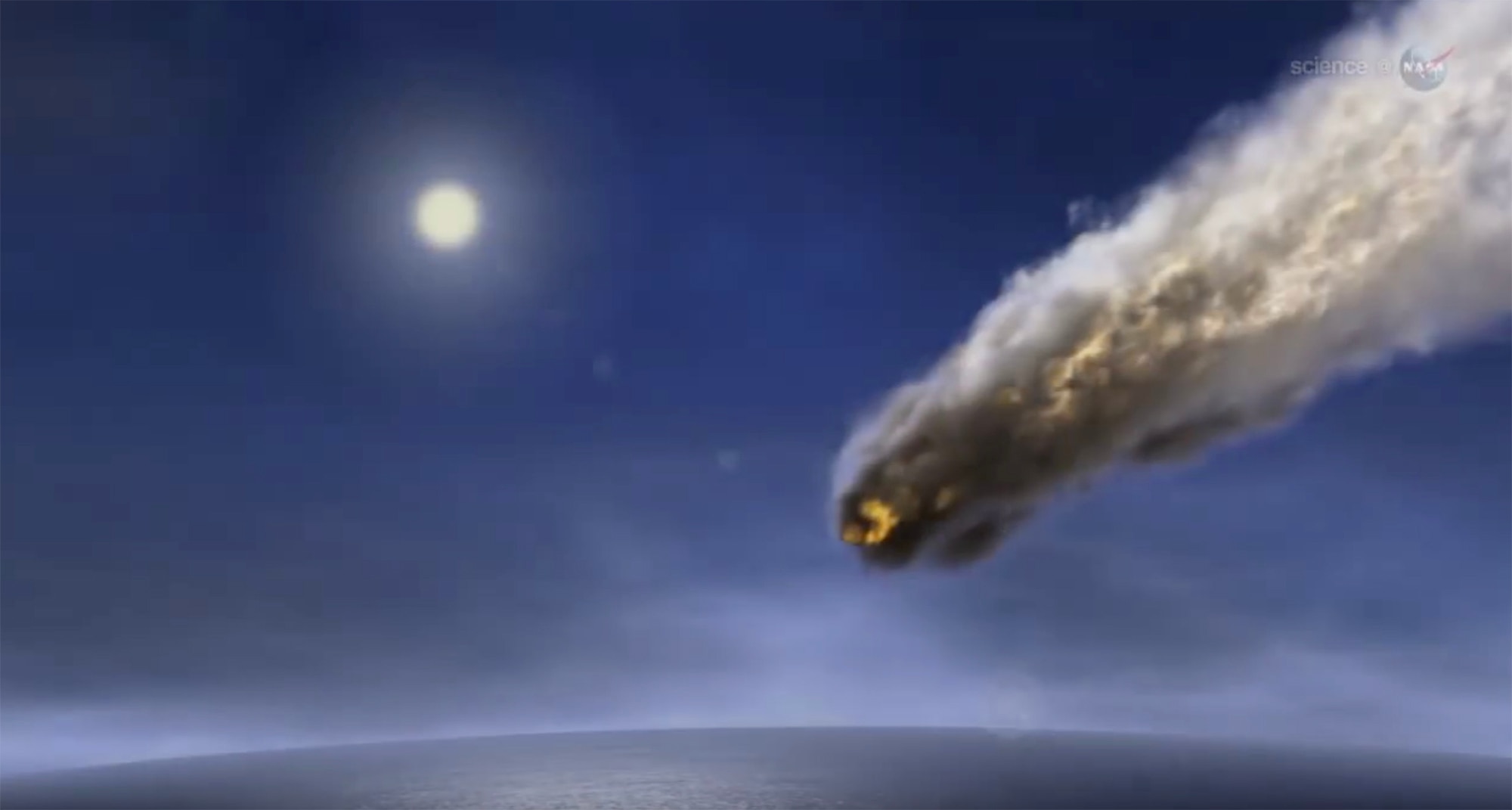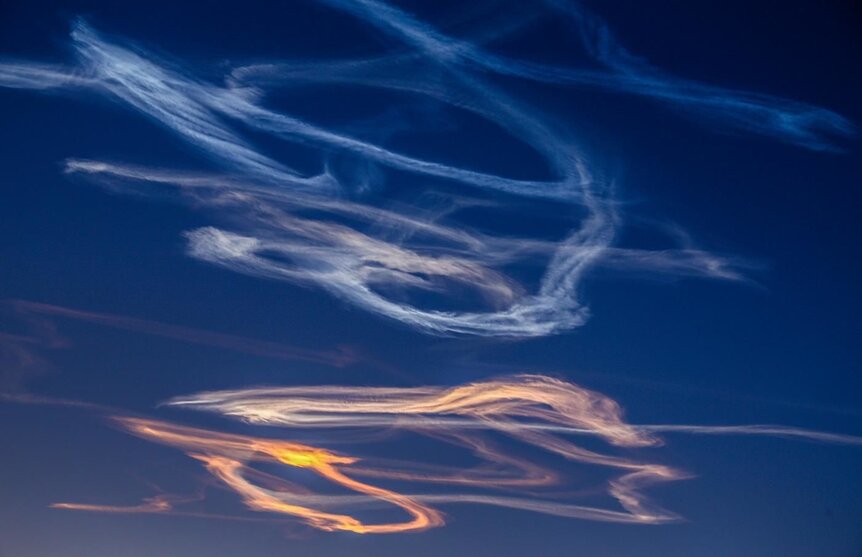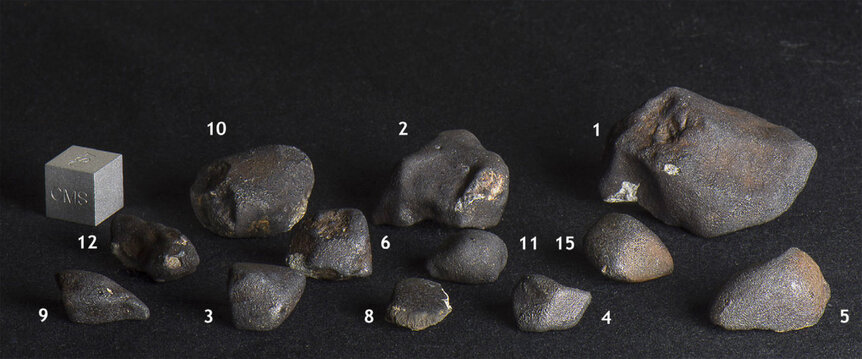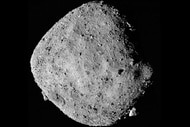Create a free profile to get unlimited access to exclusive videos, sweepstakes, and more!
Chelyabinsk's (much) smaller sibling asteroid fell over Arizona in 2016

On 2 June, 2016, at 10:56:26 UTC (03:56 local time), a very bright fireball fell over Arizona. It was seen by hundreds of witnesses and caught on multiple cameras, including some designed to look for bright meteors in the sky. In many respects it was a typical meteor, if extremely luminous due to its size (something less than a meter wide).
Except for one thing: It's likely this rock was the older brother of the one that fell over Chelyabinsk, Russia in 2013, the largest impact the Earth has seen in over a century. And that makes it very interesting indeed.
The meteor came in from the north-northeast over central Arizona at 16.6 km/sec (60,000 kph), slammed into Earth's atmosphere, and decelerated heavily. Cameras picked it up when it got hot enough to start to glow at an altitude of 108 kilometers above Earth. The ram pressure of it moving at hypersonic velocity squeezed it so hard that at 44 km up it split, ejecting a large fragment. The main body then began to disintegrate, experiencing major breakup episodes at 34, 29, and 25 km up, ejecting a lot of mass as dust and flashing brilliantly as it did. The total energy released was equivalent to about 30 tons of TNT exploding. A decent sized event — people heard a boom and it was even detected by seismometers! It left behind a glowing trail of vaporized rock, called a persistent train, that lasted long enough to be illuminated by the rising Sun later.
Doppler radar picked up several pieces falling to the ground on a reservation of the White Mountain Apache tribe. A team was dispatched and, with the permission of the tribe elders, searched for meteorites, finding 15 of them. The descent track of the parent meteoroid took it over the city of Cibecue, and so the meteorites have been named Dishchii'bikoh (pronounced dish-ki-i-bi-go) meaning "valley of the red mountains," the Apache word for the area.
Here's a local news report with video of the fall (note the size and speed hadn't been fully determined at this point):
Analysis of the meteorites was fruitful. It's what's called an LL chondrite. The LL means it has low iron and low metal content, and chondrites are meteorites with small grains of minerals in them called chondrules. LLs are relatively rare, making up about roughly 10% of all meteorites found on Earth. I'll get back to that fact in a moment.
Meteorites like these contain very small amounts of uranium, and that radioactively decays to lead at a known rate. Measuring that, scientists found the rock had an age of 4.471 ±0.006 billion years.
However, when they're out in space, meteoroids* like this are bombarded by subatomic particles zipping around the galaxy. These change the chemistry of the elements inside at a known rate, and that can be measured to get an age. The Dishchii'bikoh rock that fell to Earth had an age of only 11 million years… which means that's how long it was in space by itself. It must have come from a parent body, an asteroid 4.471 billion years old, which suffered an impact 11 million years ago that blasted material out into space.
That's where this gets cool. The asteroid that fell over Chelyabinsk Russia in 2013 was 19 meters across — much larger than this one — but was also an LL chondrite. Radioactive dating of Chelyabinsk meteorites gives an age of 4.452 ±0.021 billion years. Within the uncertainty, that's identical to the age of the Dishchii'bikoh meteorite, heavily implying they came from the same parent body! Not only that, some of the elemental abundances are the same between the two as well, again implying a common parent.
That's pretty cool. Only four LL chondrite meteors have ever been caught on camera, including Chelyabinsk and Dishchii'bikoh, so finding out these two may be from the same parent body is pretty interesting scientifically! The cosmic ray exposure age of Chelyabinsk meteorites indicates they were in space for only about 2 million years, which means the parent body got slammed again 9 million years after the impact that made the Dishchii'bikoh body; this time perhaps it was a bigger impact, dislodging the much larger Chelyabinsk rock.
Having these LL chondrite meteors on camera also means these objects can have their orbits calculated by tracing their paths in the sky backwards into space. It looks like they came from an asteroid in the inner asteroid belt (that is, closer to Mars than Jupiter) with an orbit roughly in the same plane as the major planets. But… Dishchii'bikoh came in at a relatively high angle. That implies it's had an encounter with Earth at least one time before which affected its orbit, slinging it up into a higher angle. That's not too surprising; if it was on an orbit that resulted in an actual impact, then it likely got close to Earth several times in the past.
I collect meteorites; I have quite a few, including a small piece of Chelyabinsk given to me by a friend. When I hold them in my hand I like to think about how old they are, how long they were in space, what their history was. And now, with cameras capable of triangulating their path through our air, the ability to find their orbits, and the measurements of their various ages, we can find out a lot more about them than merely wondering.
Including that this 2016 Dishchii'bikoh impact likely came from the same parent asteroid as Chelyabinsk. They're siblings!
The next time you're out under a dark, moonless sky, you may see a meteor or two flashing across the sky. For centuries humans wondered what they were, where they came from. Now when you see one, remember that it's only been in the past few decades that we can say we know.
















